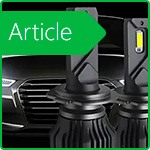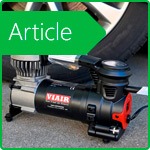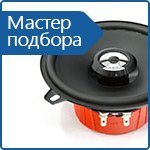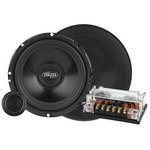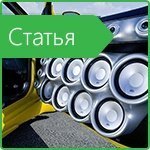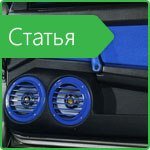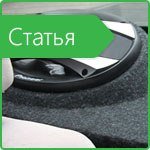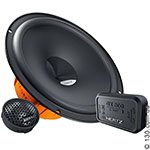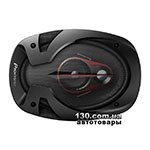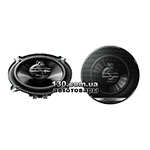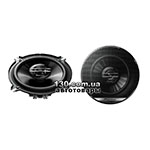Causes of failure of the speakers. The experience of engineer
Let's consider the main causes of damage to speakers, using the knowledge of the school physics course and errors in operation. Since all these devices can be divided into two groups (with a small amplitude of oscillations — a tweeter, and with a large amplitude — broadband, midbas, subwoofers), we will begin the analysis from the first group, especially since there are nuances about which I know not many ...
So, tweeters, high-frequency car speakers , tweeters — all these concepts refer to this type of sound emitters. Structurally, such dynamics have small dimensions (only a few centimeters in diameter), wound with a thin wire, the mobile system (diffuser) has a small amplitude of travel, but nevertheless have a very high sensitivity at a sound pressure of 93-95dB.
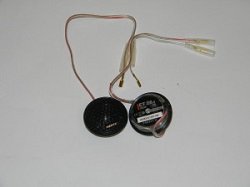
It is pressure, not power, because we hear not Watts, but decibels. Why? Yes, because the sound arises through the oscillation of the mobile system, which causes pressure on the surrounding air. So he sends these fluctuations to us. And the further we from the source, the quieter the sound. I do not mention the delay, because this point of the physical characteristics of sound waves has no direct influence in listening to music in the car salon or in the room where the listener is located, when the distance between the acoustics and the listener is small.
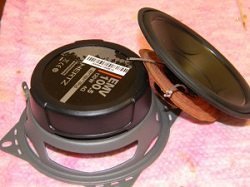
The tweeter, for correct and durable operation, must be connected to the amplifier exclusively through a crossover, or the frequency cut must be made at the amplifier input. What is it for? After all, these speakers write a nominal power of 25-100 W. However, the midbasic speakers write the same ... Literally, it should be understood as follows: the speaker can work as part of a multiband system with an input power of 80-120 W, provided that it is connected through a crossover with a frequency cut not lower than recommended by the manufacturer. From the power formula, we remember that this is a product of current and voltage.
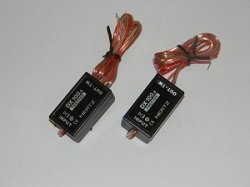
And the diameter of the voice coil wire is on average 0.1 mm, which will not allow even 10 W to be sustained in the full frequency range (20 Hz-20 kHz). And why then do we need a crossover? It turns out that it limits the playback band where "extra" frequencies can not be reproduced by this type of speaker. Specifically, for tweaks, you must limit the frequency in lowercase. Those. all frequencies below 2.5-3.5 kHz should be eliminated. For what? The answer is simple — the lower the frequency of sound, the higher the oscillation amplitude of the mobile system. But why does it matter? And here already complex physical processes begin:
Item 1
The air gap of the magnet has the maximum induction along the perimeter of this gap and is smoothly reduced along the perpendicular line (along the axis of the diffuser and the coil itself). Accordingly, the further the voice coil is removed from the gap, the lower its inductance. So what? And the fact that the usual impedance of the dynamics in 4 Ohms is a conventional indicator and is measured by an Ohmmeter at a constant current, and what is most interesting, on a fixed diffuser. It is worth while to measure slightly to press a finger on the dome, instantly the measurement readings will change. Why? Yes, because any speaker is an electrodynamic device that has the property of reversibility of the conversion of an alternating current. As a sound emitter it works when an amplifier is connected to the terminals, but this speaker should be switched to the signal input of the equipment and shouted into it, the effect of the microphone will be obtained, and our voice will be heard at the output of the amplifier. In other words, the resistance of the speaker during operation is an extremely complex indicator, and it depends on the frequency and amplitude of the signal being supplied, as well as on the stiffness of the diffuser suspension. This is what determines the so-called resonant frequency of the speaker, which is important for the correct adjustment of the playback band. And when the voice coil is very far from the center of the magnet, the resistance is sharply reduced and the wire overheating begins. Eventually, the winding will heat up so that the varnish is charred and a short-circuit occurs. Everything, the speaker has burned down ...: (
Paragraph 2
To save on the speakers, many use a two-band scheme — one midbass and one tweeter. To reconcile their frequency ranges, a crossover is used, to each speaker its own. And often, the frequency of the partition is very low. This is dangerous for tweeters. Why? And here's why: a tiny dome tweeter is forced to work in a wide frequency range. And if for the highest frequencies the amplitude of the oscillation is tenths of a millimeter, then at medium frequencies it can already be up to 1-1.5 mm (with the winding only 2-3 mm in height). Now remember that professional tweeters are made of the so-called titanium alloy, or from other material of increased rigidity. It is lightweight, durable, has a high modulus of elasticity and wear resistance. But this, exactly, is the second reason for the failure of the speakers. The current through the speaker depends on the elasticity of the dome. The smaller, the lower the current. And if the diffuser is very severe, the efficiency of radiation falls. On the fingers, it looks like this: while the amplifier "moves" the diffuser in one direction, the voice coil has a minimal reaction back to the amplifier. Increasing the output voltage of the amplifier causes a synchronous increase in the voltage of the internal EMF inside the speaker. But the dome stopped (the stretch was over) and started moving backwards. This caused an EMF with the opposite sign, which in sum with the emf of the amplifier, according to Ohm's law, is added up, and therefore also increases the current through the speaker. It works in antiphase with the source and therefore its efficiency is lost. To equalize the frequency balance, we "wind the top", not trying to limit the middle frequencies, thereby overloading the tweeter. As a result, the thin wire of the winding overheats and a short circuit occurs. The speaker was burnt again ...
Summing up the analysis of the first two points, we can say with certainty: both the excess of the amplitude of the coil's path inside the magnet, and the blocking of the stroke by the rigidity of the suspension are equally harmful for the work of tweeters. The same goes for the subwoofer speakers, which are considered long-running radiators (the amplitude of the diffuser's vibration up and down is up to several tens of millimeters), but for them the situations described above are also fatal!
The main weapon in this case is the limitation of the frequency range from below. Those. if the lower frequency, declared by the manufacturer, of the playback frequency of the speaker, for example, is 28 Hz, then this means that all frequencies are lower — we will not hear, no matter how competently the case was calculated. However, the speaker itself will move the diffuser and at a frequency of even 5-7 Hz, but this will be only air compression, not sound. And the fact that the label says 350 W, only means the permissible power from the amplifier, but at what frequency — not indicated! And here is the main secret of such speakers: at infra-low frequencies, the permissible deviation of the coil from the magnetic field (denoted as X-max) will occur at a voltage level several times smaller than at a frequency of 1 kHz. And it is on it that the measurement is made, and subsequently the declared power of the dynamics. Exceed this amount categorically not allowed. Anyone who does not know this will burn even the most powerful device with an amplifier that does not have a sabson filter — an infrared low-pass filter. Experienced installers recommend limiting the lower cutoff frequency of the filter at the level of 5-7 Hz higher than the lower frequency specified by the manufacturer (in our example it is 33-35 Hz), since it can not always be measured accurately, there may be variations in a particular speaker instance, not every user will be able to distinguish and hear such frequencies, and unnecessarily overload the speaker — just to shorten his life! And if the seller in the store or in the market to your question about the permissible capacity will answer — the figure on the label, the same and the power, it means his task is to "steal" you goods and earn money. And what will happen next — he does not care. Moreover, in the event of a breakdown, the buyer is sent directly to the service, and let them think up what to answer in this situation. And people there are not always competent, often you will be considered guilty of improper exploitation or assure you that this is the fault of the manufacturer ... My task is to find the reason why this happened and how to avoid a repetition of the situation in the future! And now back to the tweeters again.
Item 3
It happens and the blemish of the manufacturer (simply marriage). This is when the speaker design has such an arrangement of the diffuser and voice coil that it is already partially located outside the magnetic field (it should be exactly in the center) or when the assembly is skewed, which means that in this place the resistance and efficiency is below the norm, part of the coil is under constant overheating and over time, the upper part of the coil is charred before the lower part. Again, overheating and short circuit.
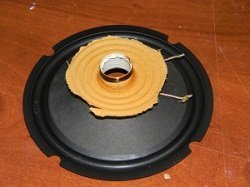
To my regret, any manufacturer and its representation in the sold region are very reluctant to recognize this as a marriage. They can be understood — any "FE" to the product spoils the image, the speaker was checked before installation and it worked, which means that the reason is not a qualified installation, or the user has twisted the levels from himself. But the autopsy of these burned speakers confirms the truth — you will not believe until you check it out!
Item 4
The fourth point can be called something between the first and the second. This is a banal overload on the level of the input signal. The cutoff frequency is adjusted precisely, and the amplitude is almost not off scale. But the excess input power, however, causes a slight overheating, which eventually kills the tweeter. This is the least common phenomenon, so to say — aging dynamics. But this also happens, and this can also be considered the cause of the malfunction.
Item 5
And the fifth point, I would call not high-quality power amplifiers. If we take the sector of automotive audio equipment, then the market is oversaturated with cheap equipment. For many users, this is the decisive choice when buying, as finance is sung ...
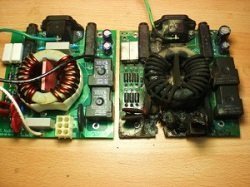
What's wrong with those amplifiers? Yes everything: the circuit, components, power source, the correctness of the technical solution of the device as a whole. The main cause of the problem is the clipping of the amplifier. Due to the poor quality of the power supply and the underestimated power, the level of the supply voltages of the amplifier circuit drops out to such a degree that the sawtooth breaks of the sinusoid appear on its output (and the sound is exclusively harmonic sinusoidal signals), which causes a large number of harmonics (each subsequent doubles in frequency but in the same time decreases in amplitude). The system of protection in such devices is not perfect and allows this flurry of high-frequency energy to pass to the dynamics, which, alas, is skipped by the passive crossover and simply "burns out" the voice coil of the speaker, and sometimes its own board.
Here are the nuances with tweeters. In general, almost all of the above can be attributed to the rest of the dynamics. But for those who understand the above written, I hope this will help to identify errors in installation and operation, and help avoid unnecessary breakdown of such expensive audio components! Buy speakers in Kiev, Kharkov, Odessa at 130.com.ua with delivery to Ukraine.
Related materials:
Car acoustics: Best Sellers

Stay tuned for updates!
Subscribe to our Telegram channel and be the first to receive useful materials.
Subscribe












